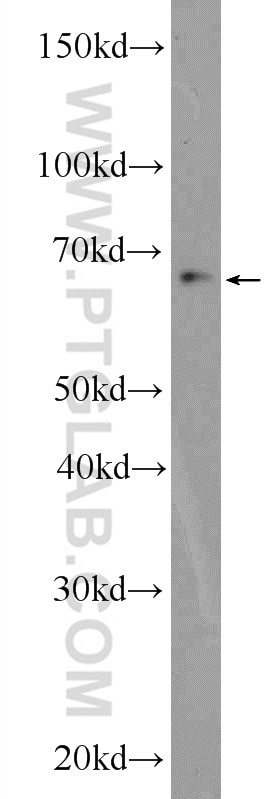ZBTB46 Polyclonal antibody
ZBTB46 Polyclonal Antibody for WB, IHC, ELISA
Host / Isotype
Rabbit / IgG
Reactivity
human, mouse
Applications
WB, IHC, ELISA
Conjugate
Unconjugated
Cat no : 25455-1-AP
Synonyms
Validation Data Gallery
Tested Applications
| Positive WB detected in | RAW 264.7 cells |
| Positive IHC detected in | mouse skin tissue Note: suggested antigen retrieval with TE buffer pH 9.0; (*) Alternatively, antigen retrieval may be performed with citrate buffer pH 6.0 |
Recommended dilution
| Application | Dilution |
|---|---|
| Western Blot (WB) | WB : 1:500-1:1000 |
| Immunohistochemistry (IHC) | IHC : 1:50-1:500 |
| It is recommended that this reagent should be titrated in each testing system to obtain optimal results. | |
| Sample-dependent, Check data in validation data gallery. | |
Product Information
25455-1-AP targets ZBTB46 in WB, IHC, ELISA applications and shows reactivity with human, mouse samples.
| Tested Reactivity | human, mouse |
| Host / Isotype | Rabbit / IgG |
| Class | Polyclonal |
| Type | Antibody |
| Immunogen | ZBTB46 fusion protein Ag22273 相同性解析による交差性が予測される生物種 |
| Full Name | zinc finger and BTB domain containing 46 |
| Calculated molecular weight | 589 aa, 64 kDa |
| Observed molecular weight | 70 kDa |
| GenBank accession number | BC073800 |
| Gene symbol | ZBTB46 |
| Gene ID (NCBI) | 140685 |
| RRID | AB_2880088 |
| Conjugate | Unconjugated |
| Form | Liquid |
| Purification Method | Antigen affinity purification |
| Storage Buffer | PBS with 0.02% sodium azide and 50% glycerol pH 7.3. |
| Storage Conditions | Store at -20°C. Stable for one year after shipment. Aliquoting is unnecessary for -20oC storage. |
Background Information
ZBTB46, also named as BTBD4, ZNF340, is a 589 amino acid protein, which contains one BTB (POZ) domain and two C2H2-type zinc fingers. ZBTB46 functions as a transcriptional repressor for PRDM1.
Protocols
| Product Specific Protocols | |
|---|---|
| WB protocol for ZBTB46 antibody 25455-1-AP | Download protocol |
| IHC protocol for ZBTB46 antibody 25455-1-AP | Download protocol |
| Standard Protocols | |
|---|---|
| Click here to view our Standard Protocols |




